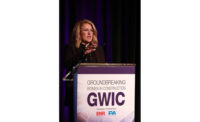Traffic-calming road redesigns, vehicle-miles-traveled-based pricing and partnerships with technology companies are all part of the new era of transportation. Agencies and state transportation departments are trying to maximize existing infrastructure capacity and mobility, with less emphasis on expanding roads.
Several states are following Oregon’s lead in experimenting with miles-based user fees. In Colorado, 100 participants in a four-month pilot study agreed to odometer readings, GPS tracking or mileage reporting devices, said Deb Perkins-Smith, director of transportation development for the Colorado Dept. of Transportation. While only 29% had positive perceptions at first, 81% felt it was fair in an exit survey, she told attendees at the annual Women’s Transportation Seminar, held last month in San Diego.
The U.S. Dept. of Transportation has authorized up to $95 million in federal grants over a five-year period to explore alternative transportation funding. With a $3.1-million grant, the 16-state I-95 Corridor Coalition, with the Delaware Dept. of Transportation as the lead, launched a three-month pilot study in May, said DelDOT Secretary Jennifer Cohan. It will examine the challenges presented by multistate toll interoperability.
Oregon’s permanent program, now four years old, has 1,400 vehicles enrolled. Drivers are charged 1.5 cents per mile and are refunded for state gas taxes they pay at the pump. The state is partnering with California to look at interstate operability. One challenge is equity, as 30% of Oregonians do not have bank accounts, said Maureen Bock, director of the Oregon road-usage charge program.
Equity was a recurring theme at the conference. “When we consider any project, we think first about the most vulnerable and how we can lift them up,” said Therese McMillan, chief planning officer with the Los Angeles County Metropolitan Transportation Authority.
The agency is also going through a culture shift in how it does business by turning to the private sector for ideas, she added, noting its unsolicited proposal process.
Other transportation trends include “road diets,” which typically entail turning a four-lane, undivided roadway to two through lanes and a two-way left-turn lane. Rebecca Crowe, transportation specialist with the Federal Highway Administration, said this could reduce crashes by up to 47%. Panelists showcased examples of how it can generate commercial development and community enhancement opportunities.



Post a comment to this article
Report Abusive Comment